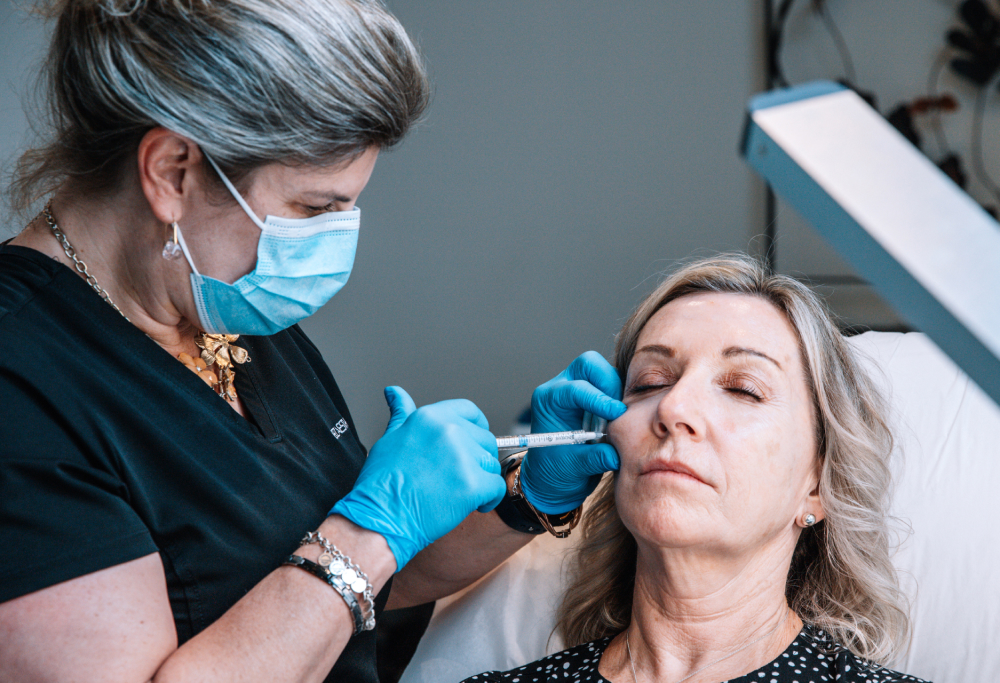blog
Vascular Occlusion: What It Is, Signs to Watch Out For, and Tips to Reduce the Risk

Jul 29 2022
Reading Time: 4 Minutes
Author: Patricia Pezzano
Vascular occlusion is one of the risks of Botox and fillers. It’s extremely rare—but it can happen. And when it does, the results can be dangerous.
In this article, we discuss what vascular occlusion is, what signs you should watch out for, and a few safety measures that will help reduce the risk.
What is Vascular Occlusion?
As one of the possible risks of fillers and Botox, vascular occlusion (VO) happens when the injection hits an artery. It can also result when the arteries and capillaries surrounding the injected area are compressed. When this happens, it blocks the flow of blood (thrombosis) and reduces the oxygen supply in the tissue (ischemia), causing the skin to suffocate.
It’s similar to a heart attack, but instead of cholesterol or blood clots, the occlusion is caused by a filler. And instead of the heart, the affected area is the skin. If left untreated, vascular occlusion can lead to blindness, necrosis, and cerebral embolism.
How to Recognize Vascular Occlusion
Because this condition may be among the risks of Botox and fillers, swift identification is crucial in preventing the progression of vascular occlusion. Here are some of the signs to watch out for:
Severe Pain
Severe pain experienced by the patient at the time of injection is not normal in filler treatments.
Sudden or escalating pain during or in the hours following treatment also isn’t normal and therefore, warrants an urgent review. Injectors should also be aware that sometimes, any pain outside the injection area could be a warning sign of vascular occlusion.
Blanching
Because the blood supply in the injected area is compromised, the skin changes colour. It can range from white, pale spots to dusky blotches that persist even after a massage or warm compress has been applied.
Discolouration
The appearance of purple or blue-grey “bruises” on the skin is also a sign of vascular occlusion. Discolouration becomes evident shortly after the initial injection into the area.
Coolness
Because the injected area loses sufficient blood supply, the skin begins to cool down. The coolness of the skin won’t be apparent until several hours after the treatment.

12 Safety Measures to Reduce The Risk of Vascular Occlusion
Vascular occlusion is one of the rare, associated risks of Botox and fillers but with these 12 safety measures, you can effectively reduce the likelihood of the condition.
1. Knowledge of Anatomy
If you have complete knowledge of the treatment area’s three-dimensional anatomy, then half the battle against occlusion is already won.
You must also know which arterial and vasculature structures are vulnerable to occlusion as well as how aging or previous surgical procedures can change structural orientation. This is especially important in the “danger zones.”
2. Slow Injection Technique
Injectors must employ a slow injection technique under low-pressure to reduce the risk of occlusion. The filler must also be delivered at the correct depth and tissue plane.
3. Go For Low Volume
Overfilling the targeted area can also lead to occlusion. You must use only the smallest possible volume. If you need more to achieve the desired effect, doing a repeat treatment after a week or two is a safer option.
4. Avoid Previously Scarred Areas
Deep tissue scars can fix arteries in place and make them easier for the injection to penetrate. To prevent occlusion, avoid areas with previous scarring. Be cautious as well of patients who have undergone rhinoplasty or other surgical procedures. Their vasculature or anatomy may have been altered because of it.
5. Aspirate
Aspirating before injecting fillers can help make sure that the injection isn’t intravascular or in a blood vessel. Although it helps, injectors shouldn’t rely on aspirating alone to avoid occlusion.
6. Avoid Bolus Injections in Areas Prone to Occlusion
To prevent vascular occlusion, avoid giving bolus injections (a single dose administered over a short period of time) in areas vulnerable to the condition.
7. Avoid Using Local Anesthetic
Injecting local anesthetic can mask the patient’s pain in the event of an occlusion. Also, avoid using soft tissue fillers mixed with anesthetics and products containing adrenaline.
8. Be Cautious of Dangerous Regions
Make sure to avoid injecting into the tip of the nose. It’s a highly vascular area with restricted tissue space, which makes the occurrence of occlusion highly probable.
Also, use caution when injecting the glabellar area. To prevent occlusion in this region, injections should be positioned intradermally and medially.
Injectors are also encouraged to use Botox in the glabella first before injecting soft tissue fillers to reduce severe wrinkles.
9. Use Blunt-Ended Cannulas of 25G or Larger
Blunt-ended cannulas of 25G or larger are less likely to penetrate vessels and lead to intravascular injections. Take note, though, that the risk goes up with force and the patient’s age.
10. Consider Using Reversible Fillers
Inexperienced injectors should consider using reversible hyaluronic fillers to make occlusion management easier.
11. Inject in Sessions
For patients looking for a complete facial rejuvenation—cheeks, temples, lips, jawline, and perioral area—it may be best to split the treatment into three to four sessions. The more areas that are injected at the same time, the harder it would be to isolate the area of occlusion in case it happens.
This helps to improve patient safety and contributes to the development of a trusting relationship between patients and injection experts.
12. Avoid Using High-Density Fillers
Using high-density fillers (higher G prime) also has a higher occurrence of occlusion as they create greater extrinsic pressure on vessels.

Learn From Injection Technique Experts at APT
The right training makes all the difference in ensuring that you can inject fillers safely. In the event that vascular occlusion happens—no procedure is without risks after all—you can rely on the skills you’ve learned to identify and treat the condition.
APT Injection Training is an internationally-recognized teaching facility providing physicians and other registered medical professionals with advanced Botox and dermal filler injection training. We’re here to equip you with all the right techniques to propel your career forward.
Get in touch with us or visit our website to know more about the courses we offer.
Tips to be a
Successful Injector!
Free E-Book download
 Student Log in
Student Log in
 1267 Cornwall Rd, Unit 300, Oakville, Ontario L6J 7T5
1267 Cornwall Rd, Unit 300, Oakville, Ontario L6J 7T5

 (289) 271-5718
(289) 271-5718




































